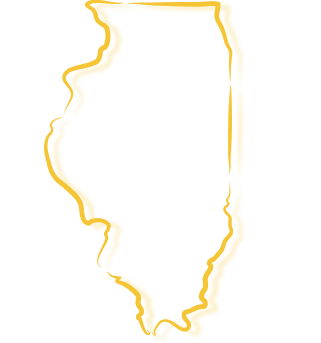Is Road Travel More Dangerous in the Summer or Winter Months?

By Zane T. Cagle | May 30, 2019 | Car Accidents
More Fatal Car Crashes in the Summer
Many of us tend to think that winter driving is far more dangerous than summer driving due to winter weather like ice and snow. However, when we examine the actual statistics of fatal motor vehicle crashes, it becomes apparent that June, July and August consistently have the most fatal crashes. In the Midwest, we think that December and January would be the most dangerous because of ice and snow, but actually the summer months combined out pace the winter months. While winter weather always makes driving difficult and the possibility of a crash more likely, the highest number of fatal crashes occur in the warmer months. December usually sees a high number of fatal crashes due to inclement weather and increased alcohol consumption due to the holidays.
Overall, the summer months of June, July and August consistently see the highest number of deadly crashes than any other season of the year. These summer months have 29 percent more deaths than winter months of December, January and February. And, 20 percent more miles are driven in the summer months than winter months.
Why is Summer Driving More Dangerous?
We want to know why summer months are the most dangerous months as summer is upon us. The answer is fairly simple though we had hoped for something mind-blowing. Simply, more cars on the roadway, more miles driven and more drunk drivers all contribute to more fatal crashes. The positive news is that many motor vehicle crashes are preventable by adhering to some safety standards:
- Be aware of increased traffic during the summer months and allow extra time in planning your drive.
- Pay close attention. Refrain from driving distracted. Don’t text and drive and use the hands-free audio-only for directions. Siri and vehicle navigations recalculate no matter how many wrong turns you may make.
- Don’t drink and drive and do not ride with someone who has been drinking.
More cars on the roadway leads to more congested traffic. Naturally, when there are more cars on the roadways there is an increased likelihood of driver error which results in crashes. In the summer months, more people travel more miles usually due to recreation. More miles and more cars on the roadways lead to more crashes. Alcohol consumption during recreation and vacation does not in of itself lead to crashes, but driving while under the influence is a major cause of crashes.
Drunk driving crashes are tragic because they are 100% preventable. Choosing to driver after you have had alcohol is the definition of negligence. Each and every one of us has been educated on the dangers of drinking an driving. If you have lived in the modern world in the last 30 years, you have seen many, many public safety messages, recreations of drunk driving crashes or you have been personal impacted by a drunk driver. We all know that driving under the influence is illegal and one of the leading causes of serious injury car collisions or worse, fatal car crashes.
Fatal Crashes in the U.S. By the Numbers
In 2016, fatal crashes led to 37,461 total fatalities including 25,096 vehicle occupants, 5,286 motorcyclists, and 7,079 non-occupants. In 2016, the deadliest 3-hour period was midnight to 3 a.m. on Saturdays with 1,015 fatal crashes closely followed by the 3-hour period of 6 p.m. to 9 p.m. on Saturdays with 1,001 crashes.
Thirty-eight percent of all fatalities began with a crash with another motor vehicle. The most common collision occurred at an angle such as intersections crashes like T-bone collisions.
Forty percent of fatal car accidents occurred with a collision with an fixed object such as tree or street sign, or a non-collision such as rollovers.
Forty-eight percent of all fatal accidents took place during nighttime conditions. Of these accidents 41 percent occurred in dark, but lighted conditions such as dusk and dawn.
Fifty percent of fatalities in car accidents involved driver, 17 percent were passengers and 16 percent were pedestrians and 14 percent were motorcyclists.
People aged 21-24 had the highest fatality rate per 100,000 people
The fatality rate per 100,000 population was lower for females than for males in nearly every age group except for children younger than 5 years old.
The risk of vehicle crashes is highest for teens, 16-19 years of age. Teen accounted for 2,333 fatalities and 233,845 injuries due to car accidents. In 2013, teen accounted for 11 percent of the total car accident costs, despite representing only 7 percent of the US population. And, males accounted for twice as many fatalities as females.
Teens and seat belts–in 2015, 61 percent of high school students reported wearing seat belts as passengers in another vehicle–this is drastically low. And 20 percent of high school students reported that they had ridden with a driver within the previous month who had been drinking alcohol.
In 2015, 60 percent of drivers ages 15-20 killed in an accident after driving under the influence were not wearing a seatbelt at the time of the crash.
In 2016, 48 percent of occupant fatalities in teens 16-19 were not wearing a seatbelt at the time of the accident
Car Crashes and Distracted Driving
In 2016, 3,450 people were killed due to distracted driving
Approximately 481,000 drivers are using their phones while driving daily (however, we suspect the actual number is far higher)
Every day, an average of nine people are killed and more than 100,000 injured in crashes involving a distracted driver
In 2015, 391,000 people were injured due to distracted driving (of those crashes were it was clear that distracted driving was occurring, again, this number could in reality, be far higher)
Drivers under the age of 20 years of age have the highest proportion of fatal accidents related to distracted driving
As of June 2017, handheld phone use is banned for drivers in 14 states and the District of Columbia, while texting and driving is banned in 46 states and DC.
Phone use is a major distraction from driving. On average, it takes people a minimum of five seconds to take their eyes off the road to read or sent a text. At 55 mph, that equates to the full length of a football field with one’s eyes closed.
Drowsy Driving
Between 2005 and 2009, there were approximately 83,000 crashes due to drowsy driving
Forty-eight percent of drowsy drivers are most affected between 9 p.m. and 6 a.m.
Drowsy driving crashes occur most frequently in the late afternoon, or between midnight and 6 a.m.
About 1 in 25 drivers, age 18 or older report falling asleep behind the wheel in the last 30 days.
It is sometimes difficult to determine if a driver was drowsy or simply not paying attention as after the crash, both types of drivers are both alert and very aware. Self-reporting was crucial in the studies and often, at the scene.
Sources: National Highway Traffic Safety Administration (NHTSA), the Centers for Disease Control and Prevention (CDC), and the Federal Motor Carrier Safety Administration (FMCSA)
If You Are Involved in a Motor Vehicle Crash
If you are involved in a motor vehicle crash and are injured, then call our attorneys. If you are not hurt, then you probably won’t need an attorney. Adhere to speed limits, be attentive and refrain from driving after consuming alcohol. Drive carefully and make this summer one of the safest summers!
Call us toll free 1.800.685.3302 or locally 314.257.0253 seven days a week.
Contact Us Today
The Cagle Law Firm serves accident and injury clients throughout St. Louis and the greater St. Louis metro area, including St. Louis Counties of Chesterfield, Wildwood, Eureka, Ladue, Olivette, Clayton, Kirkwood, Fenton, Affton, and Jefferson Counties of Arnold, High Ridge, Antonia, House Springs, and the eastern Missouri and southern Illinois communities. If you or your family needs legal assistance with your personal injury case, call The Cagle Law Firm at (314) 276-1681 or use our online contact form to request a free case review or get more information.
Areas Served
The Cagle Law Firm – Missouri
The Cagle Law Firm – Illinois
The Cagle Law Firm – Kentucky
CONTACT THE CAGLE LAW FIRM TODAY
Request your FREE CASE REVIEW today by calling (314) 276-1681 or by sending a message through the site contact form. Your contact info stays private and is only used to reply to your inquiry.
Whether you need information about a new injury or existing injury, our lawyers answer your questions with no-risk and no followup marketing.
Free Consultations and Case Reviews
Questions? Ask An Attorney
Fields marked with an * are required
Copyright © 2025 St. Louis Personal Injury Lawyers | The Cagle Law Firm. All rights reserved.
Disclaimer | Site Map | Privacy Policy
Get a free case review with St. Louis' best personal injury lawyers to help you win top compensation





